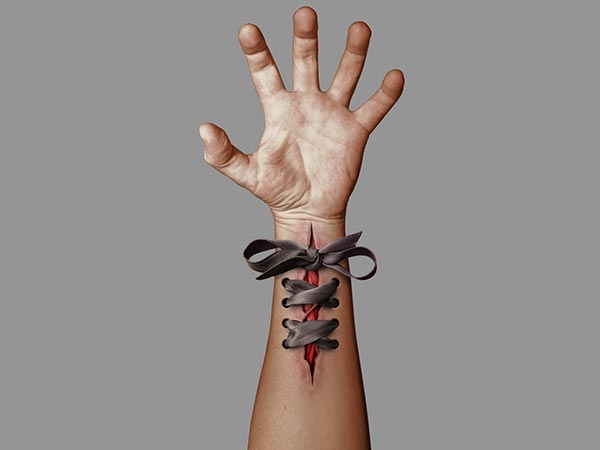Disorders Cure
oi-Shivangi Karn
on June 16, 2020
Sushant Singh Rajput died due to asphyxia resulting from hanging. This 34-year-old actor was found dead at his Mumbai residence. The postmortem report of Sushant states asphyxia with ligature marks on his neck.
Asphyxia is a condition in which the body of a person gets deprived of oxygen supply. In the absence of oxygen or due to too much carbon dioxide, the body stops functioning normally. The word ‘asphyxia’ has originated from Forensic Medicine and used particularly for death events related to suicides.
Suffocation is the term nearly used with asphyxia. The other word is strangulation which is defined as compression of airways or blood vessels in the neck, leading to asphyxia due to neuronal death. Take a look at its causes, symptoms and other details.
 Is COVID-19 Lockdown Increasing Suicide Mortality? A Study Based Approach
Is COVID-19 Lockdown Increasing Suicide Mortality? A Study Based Approach

Cause Of Asphyxia
There are two main causes of asphyxia. They include:
1. Mechanical asphyxia
- Hanging
- Compression of the neck
- Drowning
- Choking
- Smothering (by blocking the nose and mouth)
- Traumatic asphyxia (putting pressure on the chest to stop respiration) [1]
- Plastic bag asphyxia
- Positional/restraint asphyxia (mainly to control a violent or aggressive person)
- Unconscious asphyxia (when the tongue blocks the airway when a person is unconscious)
2. Chemical Asphyxia
- Excess inhalation of carbon monoxide [2]
- Consumption of cyanide (a lethal chemical that kills quickly)
- Excess inhalation of hydrogen sulfide, especially when you stay near industries releasing the gas.
- Consumption of other harmful chemicals.
 11 Ways To Care For Your Mental Health
11 Ways To Care For Your Mental Health

Asphyxia Deaths Due To Hanging
Violent deaths related to asphyxia mainly includes hanging. It is a form of strangulation that results due to blockage of the air passage in the neck. When a person suspends their body by a ligature (a thing used for tying such as the rope) in a noose form (one end of a rope which is in the form of a circle that gets tightened when a load is put) around their head, the constricting force of the ligature compresses the trachea (windpipe) and causes airways blockage. This results in the death of a person. [3]
However, during the autopsy, several factors play an also role to declare it was actually suicidal, accidental or a result of intoxication of a person.
READ RELATED: 5 Thanksgiving Meal Kits You Can Still Get Before Nov. 24
 10 Dopamine Boosting Foods You Should Include In Your Diet
10 Dopamine Boosting Foods You Should Include In Your Diet

Symptoms Of Asphyxia
- Swollen tongue
- Visual disturbances
- Swollen oropharynx (it includes the soft palate, side and back wall of the throat, tonsils, and the back third of the tongue. [4]
- Neck abrasion
- Ligature marks (material marks used for the suicidal purpose)
- Blood or vomit in the oropharynx
- Facial oedema (swelling)
- Hoarseness
 How To Mind Our Minds During COVID-19 Lockdown
How To Mind Our Minds During COVID-19 Lockdown

Is Mental health Responsible For Asphyxia?
Suicide is the third main leading cause of deaths in adults. According to the WHO, every 40 seconds, one death occurs due to suicide. Also, there are around one million people who die every year due to suicide.
Mental disorders or psychiatric disorders such as anxiety or depression are a major risk factor. A study related to a psychological autopsy report says that 24 per cent of suicidal cases were diagnosed with psychiatric disorders such as bipolar affective disorder, depressive disorders and schizophrenia (hallucinations or delusions) and dysthymia (chronic depression). [5]
Other factors include emotionally unstable, lack of frustration tolerance and antisocial personality disorders. The prevalence is higher in developed countries than in developing countries.

Risk Factors For Asphyxia
Common risk factors for asphyxia include:
- Mental illnesses such as chronic depression. [6]
- Loss of loved ones.
- Gender discrimination (especially discrimination for LGBTQ)
- A long history of bullying
- Sleep problems
- Socio-economic problems such as loss of employment or low income
- Social isolation
- Physical diseases
- Neurosis (an excessive obsession for something or irrational anxiety)
- PTSD
- Traumatic brain injury

Diagnosis Of Asphyxia
This process is when the person has survived from asphyxia. Common diagnostic methods include:
- Blood test: To find out blood count, any toxicity in the blood or coagulation of blood.
- CT Angiogram: To view any strangled injury or suicidal injury in the body parts such as the heart or lungs. It also shows bones and blood vessels contractions.
- CT scan of the brain: To evaluate stroke and any signs of haemorrhage.
- Plain-chest radiology: To find out any respiratory distress, especially in traumatic asphyxia.

Treatment Or Management Of Asphyxia
Treatment of asphyxia is based on the diagnostic reports of the patient. If a person does not shows any ‘hard signs’ or less injury, they are discharged with strict return precautions and in-home monitoring of the person by family or friends. [4]
For patients with severe signs, they are sent to the emergency department for proper treatments such as trauma surgery or neurosurgery, followed by psychiatry.
GET THE BEST BOLDSKY STORIES!
Allow Notifications
You have already subscribed
Source: boldsky blog










